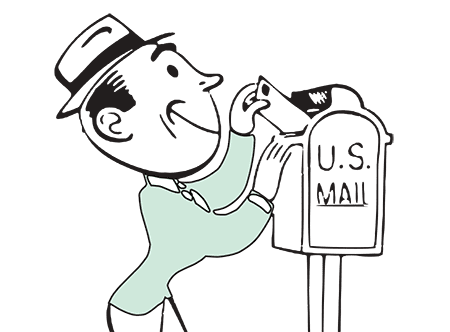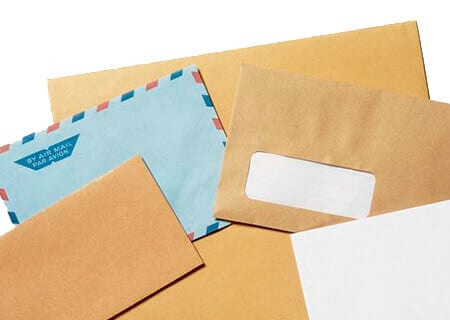Envelopes have a storied history almost as long as the idea of letter-carrying itself. In the United States, envelope history is entwined with such landmark cultural events as the Civil War, the second Industrial Revolution and the formation of the Union from the original 13 colonies. Learn more about the rise of envelope-making and corresponding postal trends in America by reading on.
Envelopes and the Rise of Paid Postage
Envelopes have been in use since 660 B.C., when Babylonians would carve cuneiform letters into “tokens” — small, hard, clay tablets — and then cover them with softer, more-breakable clay to protect the item and conceal its contents.
However, use of postage envelopes remained low for centuries because of the way that most postal systems were set up. For instance, British postage and early American Colonial postage was in the habit of charging by the sheet. This system meant that a post containing one written letter sheet would cost 22 cents in 1775 and a “double letter” written on two sheets would cost twice as much. Since an exterior envelope would have counted as an additional sheet, they were counted as a superfluous luxury among those who would earn around £60 ($120) a year. Instead, most letters were folded in three to expose the blank underside, where a seal was affixed along with addressing instructions.
All that began to change in 1839, when the British Post Office adopted a series of reforms aimed at cutting costs in the postage system while simultaneously decreasing postage prices and making postal services accessible to more income levels. Instead of charging by the sheet, an economist by the name of Rowland Hill proposed charging by weight. He also advocated using pre-paid postage stamps to allow for more simple redirection of letters in a time when most messengers were illiterate. Together, envelopes and postage stamps opened up new opportunities for postal services worldwide.
Berlin & Jones, the First U.S. Envelope Manufacturers
As envelopes grew in popularity in America from the advances introduced by Rowland Hill and others like Benjamin Franklin, a craft industry grew around their production. Stationery stores — which were already popular for their sale of high-quality papers, book-making materials, pens, sealing waxes and engraved stamps — began to hand-craft envelopes in the rear of the store when business was slow. Employees would take thick stacks of paper, place a diamond-shaped cutting form made of tin over the top and use a sharp knife to cut out a large stack of envelope “blanks” at once. These would then be folded and gum-sealed by hand along all edges except the top closing flap.
One such manufacturer sold his envelope-making portion of his business to a colleague, who then sold it to his landlord Jacob Berlin as a means of settling debt. Based in New York, 100 Berlin & Jones employees would fold and complete around 200,000 envelopes per day.
Automation & Growth
Building an envelope-making machine that was efficient, reliable and easy to use proved an incredibly difficult task for late 19th century engineers. Most machines were described as “temperamental” for their tendency to mangle the paper rather than properly folding it when a component became misaligned.
Ferdinand Ludwig Schmidt was the man who eventually solved this problem through a combination of determination, business acumen and engineering knowledge. His machines were among the most reliable, using a “plunger” system to manipulate the envelope blanks throughout the process. By the 1930s, his company was the sole major manufacturer of envelope machines left standing after the depression. His F.L. Smithe Machine company continues to pioneer envelope manufacturing and customization through sophisticated engineering.
Become a Part of Envelope History with Your Own Custom Envelopes
With the advent of affordable digital printing, envelope-making has transformed into a trade that smaller companies like Letter Jacket can be a part of. We use industrial machines built with innovations that F. L. Smithe helped craft nearly a century ago. At the same time, we are able to achieve more variety and customization than ever thanks to high-quality digital inkjet and laser printing that produces custom-printed envelopes by the thousands in short time.
Participate in this lingering slice of American history by purchasing some custom-printed envelopes for your business or organization today!



